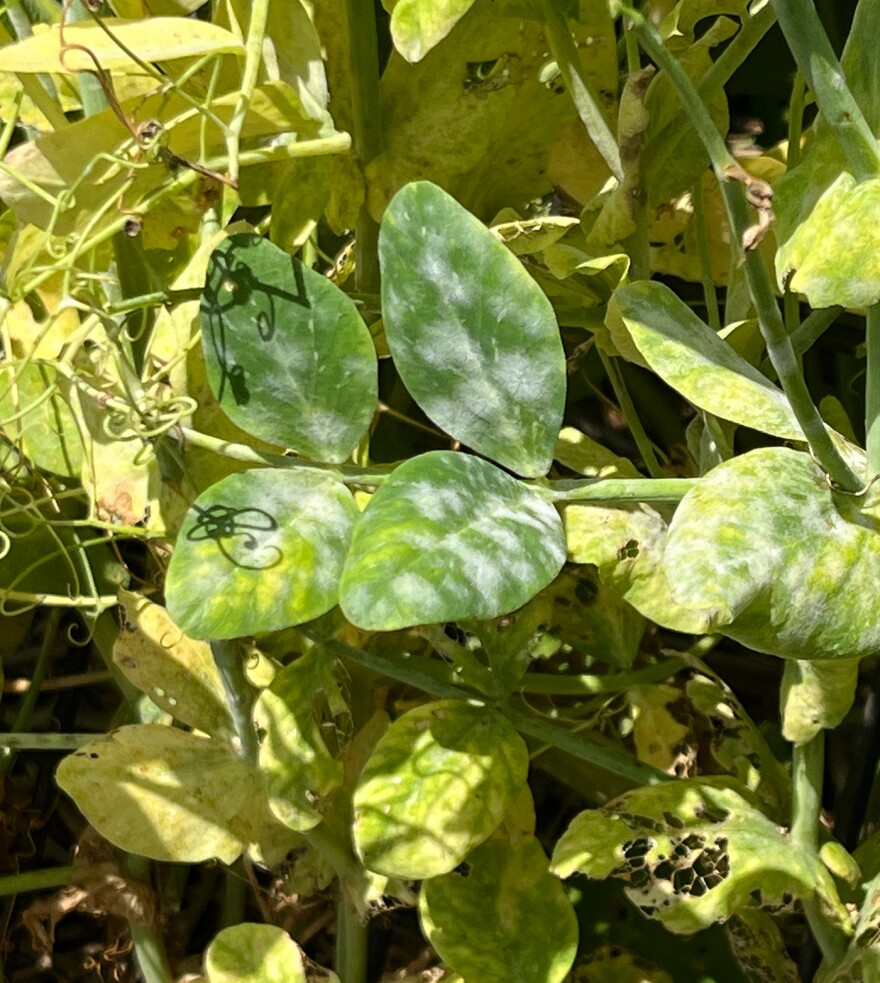Although the mornings are warmer, I still enjoy my morning walkabout through the gardens. The flowers, produce and fruit nourish my soul and satisfy my tastebuds while I continue to monitor, water, weed and feed my plants. I try my best not to neglect the indoor houseplants while caring for those in the gardens, too.
To keep the flowering plants continually blooming, I remove the spent flowers from my annual and perennial plants. Early July is when I cut back to 6 inches the Catmint, Nepeta faassenii, and cut by half the mums growing in my gardens. Both actions will bring about more blooms to enjoy later in the season. As for Iris, July is the best time to divide Bearded Iris. Any sparse blooming, tight, full clumps will be invigorated after digging, dividing and replanting. Only replant the strong new rhizomes; I toss the old ones into the trash and give away any extras. While dividing my Bearded Iris, I cut back the foliage to a 6- or 8-inch-high fan shape. I do the same in the fall to the Bearded Iris I do not divide in July.
As insect and disease issues are spied, I reach for the product that will tackle the problem with the least impact on other insects and pollinators. Lately there have been recommendations for using baking soda as an insecticide, a fungicide, soil pH adjuster and as a fertilizer.
While I dislike bursting bubbles, it has been proven through scientific research that baking soda is best used in the kitchen and not in the garden. This salt-based product is not an insecticide, nor a fertilizer and does not adjust the pH of soil. Sodium bicarbonate will kill plants if applied to excess and when it rains, the sodium will wash farther into the soil and kill other plants in the area.
If paired with horticulture or neem oil, baking soda can prevent fungal diseases — but once the fungus is established, it will no longer control the spore growth of a disease. Besides, the horticulture or neem oil is most likely doing the heavy lifting, not the baking soda. Keep in mind baking soda can burn plants (because it is a salt). Once the temperature reaches 90 degrees Fahrenheit and above, either oil product will damage plants as well.

However, the University of Massachusetts concluded in a 2017 study a fantastic use for sodium bicarbonate. Dr. Lili He, Ph.D., studied different fruit and vegetable washing methods and found that soaking produce for 15 minutes in a 1% solution of baking soda and water, followed by a thorough rinse with clean water, will remove the majority of pesticide residues from a fruit or vegetable’s surface. The solution is 1 tablespoon of baking soda to 6 cups of water. Baking soda is alkaline and breaks down the chemical compounds on the skin which aids in washing them away. This is great news and a step I am going to use on all my produce, even those organically grown.
Unfortunately, I must be the bearer of bad news: There is a pest that is migrating south into Virginia, and it is the Spotted Lanternfly, Lycorma delicatula, aka SLF. Native to China, this flying insect was first identified in Pennsylvania in 2014. SLF actually prefers to walk and is anything but delicate.
July is the month the insect molts to the 4th level, or instar of the nymph stage. Nymphs in the 4th instar are red with white spots and black stripes. These nymphs can be ¾” long and, like nymphs in the younger instars, feed on herbaceous plants and the tender new growth of trees, vines, and shrubs. These nymphs travel by jumping from plant to plant.
In mid-late July, the adults begin to emerge to feed on the woodier plants, mate and lay egg masses until frost. The adults are 1 inch long, their bodies are black, and their forewings are gray with black spots ending in black tips that sport gray veins. The hindwings are typically exposed only in flight and are red, black, and white. Due to the gray forewings, the insect is challenging to spot on trees.
Virginia Tech is asking everyone to report sightings of Spotted Lanternfly to their county Cooperative Extension Office immediately.
With a keen eye, garden issues can be identified and tackled quickly while they are small.
Happy Gardening!
-Peggy
Additional resources:
Baking soda washes pesticides from apples
Miracle, myth…or marketing: Baking soda, will fungi fail and roses rejoice? (PDF)
Baking Soda in the Garden – Hacks that Work and Don’t Work
Spotted Lanternfly in Virginia
Spotted Lanternfly Management Guide


